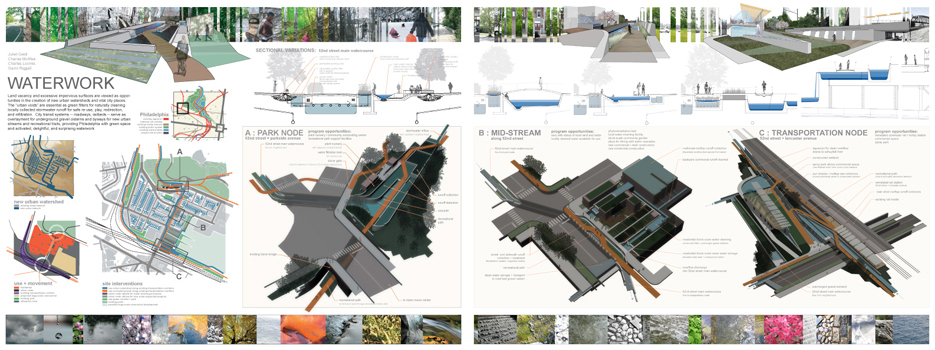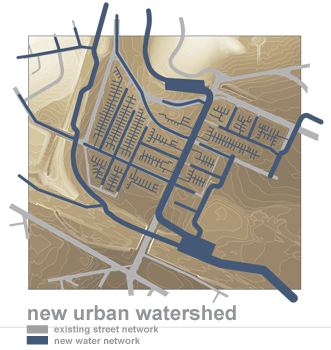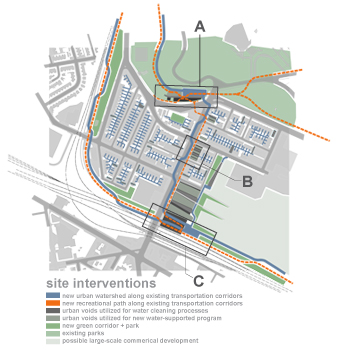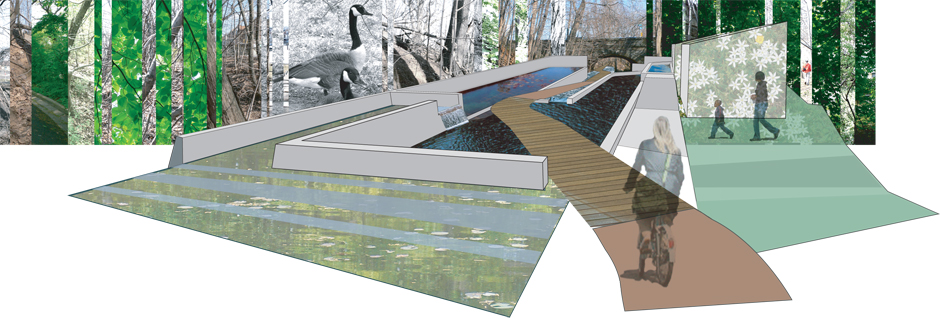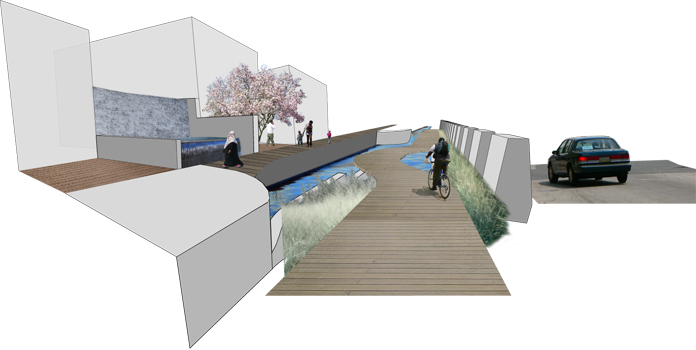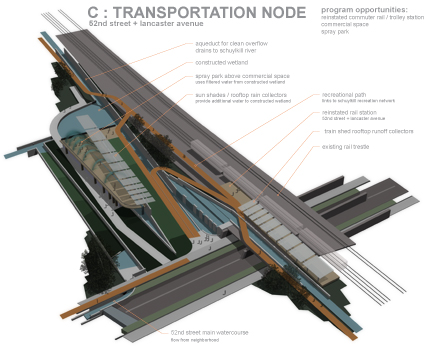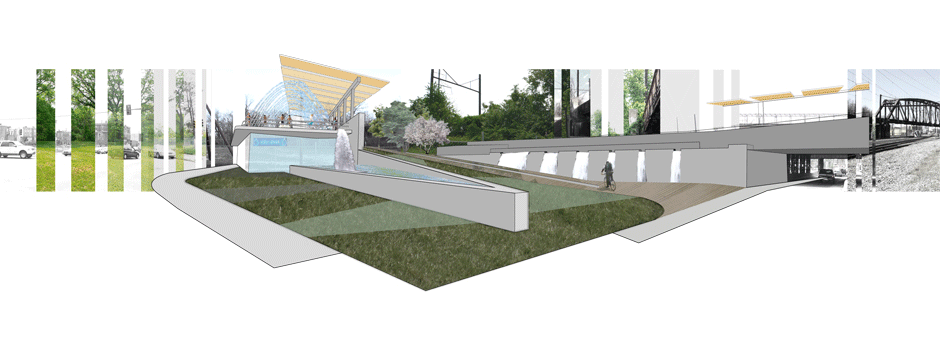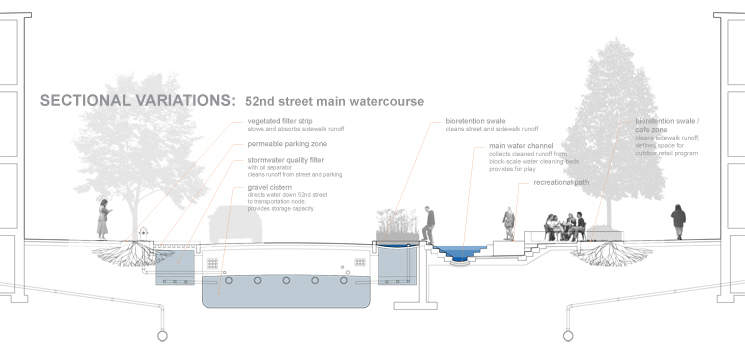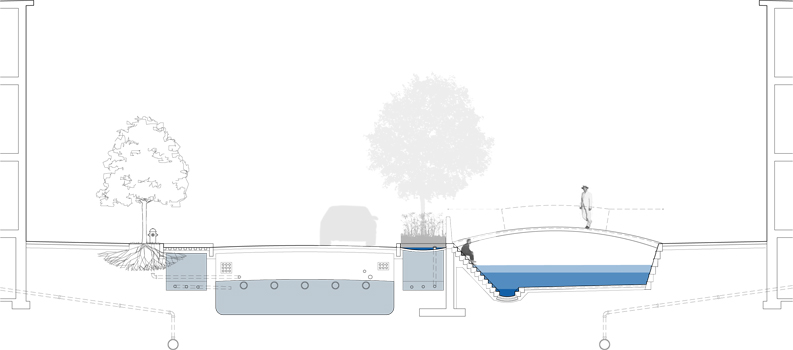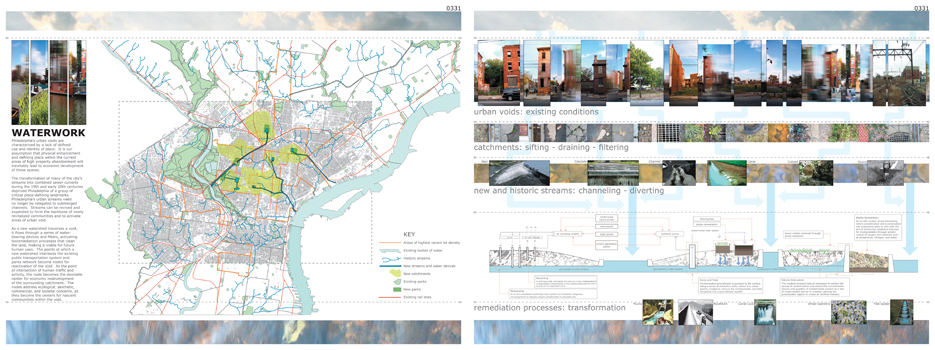Urban Voids: Grounds for Change
First Place entry in 2-phase international vacant land COMPETITION sponsored by Philadelphia City Parks Association and the Van Alen Institute of New York, The WATERWORK project lays the groundwork for subsequent collaboration with Drexel University for the Philadelphia Water Department and the EPA-mandated stormwater management Green City Clean Waters initiative.
CLCMA: Charles Loomis, Chariss McAfee
Juliet Geldi
Gavin Riggall
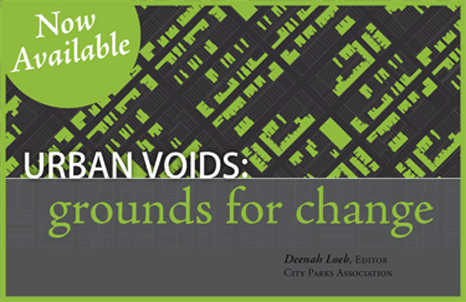
URBAN VOIDS: grounds for change
What does a city do to respond to its vacancy crisis? What could Philadelphia imagine for its future, what ideas might be generated if we looked at the 40,000 vacant properties counted (thus far) as assets, not as liabilities? How might the repurposing of this land inform new ways of living in the urban environment?
Featuring essays by key participants and an illustrated finalist gallery, URBAN VOIDS: grounds for change explores the innovative community engagement process and international ideas competition that challenged residents and designers to imagine a sustainable reuse of the vacant land in Philadelphia.
Price: $15.95 (PLUS S&H)
————————
VAN ALEN INSTITUTE NYC
PROJECTS IN PUBLIC ARCHITECTURE
Panel Discussion
29 October 2010
6:30pm
Urban Voids: Grounds for Change
with:
Glen J. Abrams, Philadelphia Water Department Watersheds Planning Manager
Ray Gastil, Gastilworks Planning & Design
Deenah Loeb, Executive Director, Philadelphia City Parks Association
Charles Loomis, Chariss McAfee, Charles Loomis Chariss McAfee Architects
PORT Architecture + Urbanism, Chris Marcinkowski
Inga Saffron, Philadephia Inquirer
Harris M. Steinberg, PennPraxis

